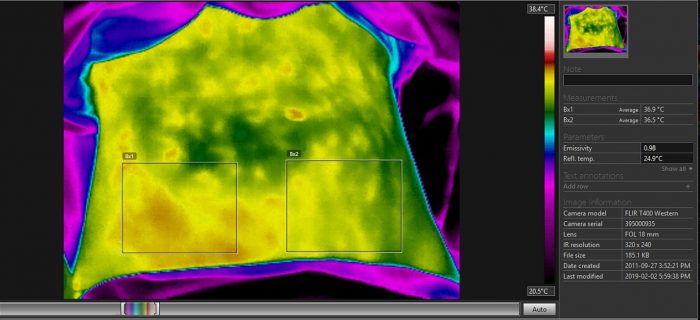Acute appendicitis is more challenging to diagnose than most people realize. A breakthrough study led by a McGill PhD graduate offers an innovative solution.

By Ashley Rabinovitch
Diagnosing appendicitis is a tricky business. Only 50 percent of patients with acute appendicitis develop classic symptoms: pain in the lower right abdomen, nausea and vomiting, and fever. Common imaging methods used to diagnose the disease, including ultrasounds and CT scans, fail to correctly identify appendicitis in 10 to 20 percent of cases. “Acute appendicitis is one of the most common surgical emergencies, and if it’s not recognized quickly and accurately, it can be life-threatening,” says Dr. José Luis Ramírez García Luna, a postdoctoral researcher who recently graduated with a PhD from the McGill Faculty of Medicine’s Division of Experimental Medicine.
While some physicians fail to efficiently diagnose appendicitis, others jump the gun and choose to operate on patients without a clear diagnosis. In many of these cases, they only discover during surgery that the patient suffers from a different problem altogether. “Clearly, there is a pressing need for new diagnostic tests in order to quickly diagnose appendicitis in some patients and avoid unnecessary surgery in others,” says Dr. Ramírez García Luna.

At the tail end of his PhD studies at McGill, Dr. Ramírez García Luna collaborated with a surgical research group at his former university in Mexico to pioneer a new approach to diagnosing appendicitis. He and his colleagues were familiar with the use of digital infrared thermal (IRT) imaging to assess blood flow to healing wounds and tissue damage in inflammatory diseases, so they came up with an idea to test its relevance in another context. “IRT is like taking a photograph, only it captures heat instead of light,” explains Dr. Ramírez García Luna. “It’s a very sensitive test that can capture differences in temperature of less than 0.1°C, so we guessed that it could detect inflammation of the abdominal wall.” He and his colleagues conducted an observational study aimed at testing the value of IRT in identifying appendicitis on a heat map.
The results of Dr. Ramírez García Luna’s study painted a clear picture. “By using IRT, we were able to diagnose patients as being healthy, having acute appendicitis, or having any other acute disease in the abdomen with over 90 percent accuracy,” he shares. Where abdominal pain was present, IRT identified appendicitis as well as an ultrasound. “The advantage is that this method can be performed without any specialized personnel or direct contact with the patient,” says Dr. Ramírez García Luna. He envisions the possibility of ER physicians using IRT at their patients’ bedsides as part of a regular diagnostic workup for any patients with abdominal pain. “Some IRT cameras that can be paired with mobile devices have become commercially available, making this technology even more readily accessible,” he adds.

Dr. Ramírez García Luna credits the opportunities he received at McGill for making his groundbreaking research possible. “I’ve found that the environment at McGill fosters collaborations and innovative thinking, while also encouraging the application of our research to solve real-life problems,” he says. While Dr. Ramírez García Luna and his colleagues recognize the need for additional research before their findings can be translated into clinical practice, they’re hopeful about the possibilities their study has unlocked.
Ultimately, Dr. Ramírez García Luna’s research has the potential to improve patient care for every Canadian who arrives in the emergency room doubled over in pain with suspected appendicitis. “In the absence of a clear imaging gold standard for diagnosing appendicitis, IRT is a timesaving, low-cost, non-invasive method that requires minimal training,” Dr. Ramírez García Luna concludes. “We believe it has real potential to influence the clinical decision-making process and improve patient outcomes.”
“Infrared thermography of abdominal wall in acute appendicitis: Proof of concept study” by J. Ramirez-Garcia Luna, L. Roberto Vera-Bañuelos, L. Guevara-Torres, M. Martínez-Jiménez, et al, was published in
Infrared Physics and Technology in March 2020 doi: https://doi.org/10.1016/j.infrared.2019.103165
March 11 2020
